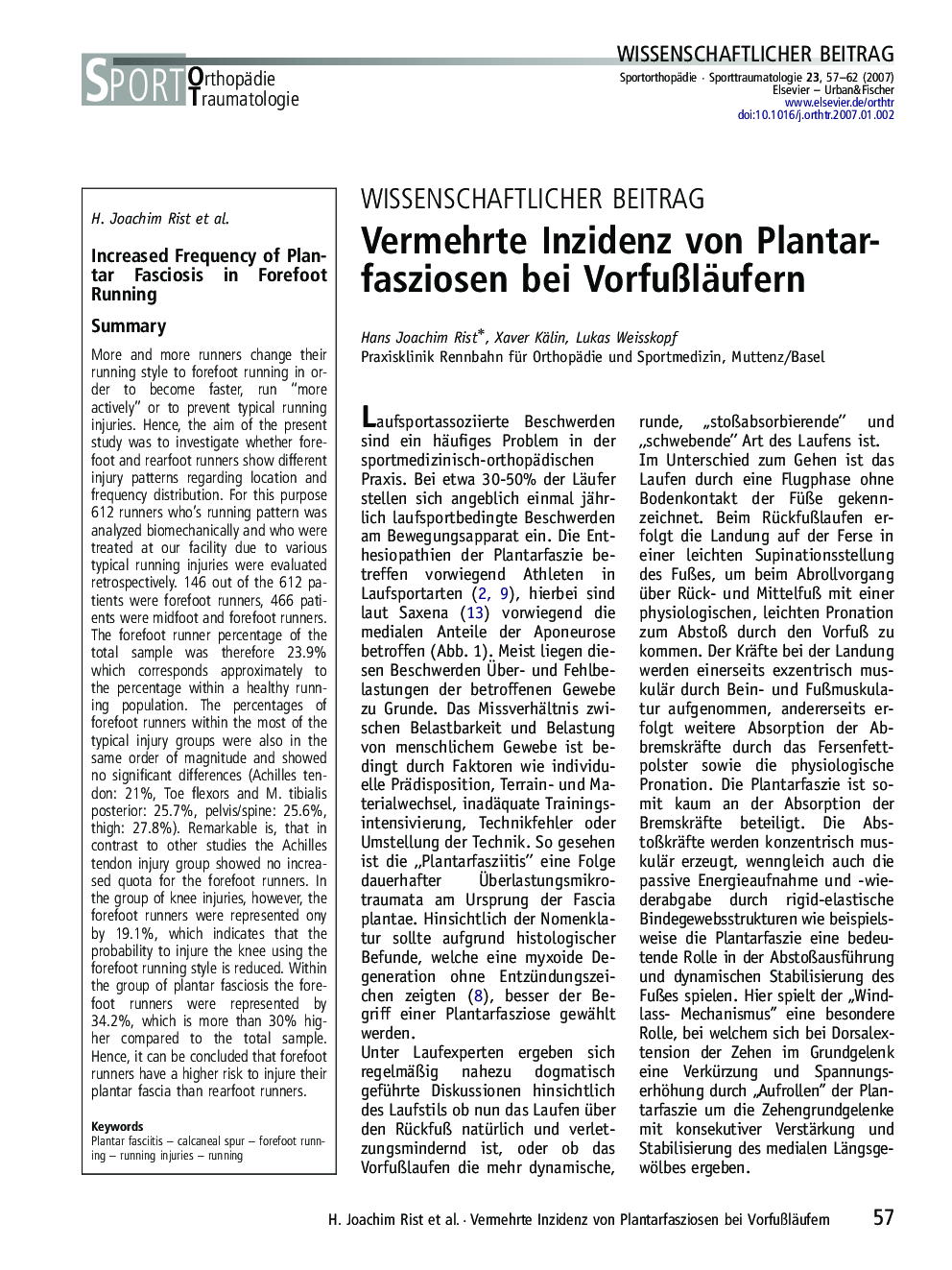| Article ID | Journal | Published Year | Pages | File Type |
|---|---|---|---|---|
| 2740980 | Sports Orthopaedics and Traumatology | 2007 | 6 Pages |
SummaryMore and more runners change their running style to forefoot running in order to become faster, run “more actively” or to prevent typical running injuries. Hence, the aim of the present study was to investigate whether forefoot and rearfoot runners show different injury patterns regarding location and frequency distribution. For this purpose 612 runners who's running pattern was analyzed biomechanically and who were treated at our facility due to various typical running injuries were evaluated retrospectively. 146 out of the 612 patients were forefoot runners, 466 patients were midfoot and forefoot runners. The forefoot runner percentage of the total sample was therefore 23.9% which corresponds approximately to the percentage within a healthy running population. The percentages of forefoot runners within the most of the typical injury groups were also in the same order of magnitude and showed no significant differences (Achilles tendon: 21%, Toe flexors and M. tibialis posterior: 25.7%, pelvis/spine: 25.6%, thigh: 27.8%). Remarkable is, that in contrast to other studies the Achilles tendon injury group showed no increased quota for the forefoot runners. In the group of knee injuries, however, the forefoot runners were represented ony by 19.1%, which indicates that the probability to injure the knee using the forefoot running style is reduced. Within the group of plantar fasciosis the forefoot runners were represented by 34.2%, which is more than 30% higher compared to the total sample. Hence, it can be concluded that forefoot runners have a higher risk to injure their plantar fascia than rearfoot runners.
